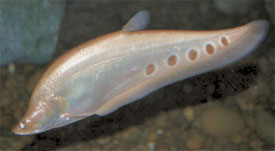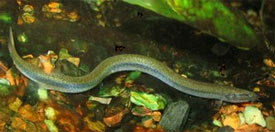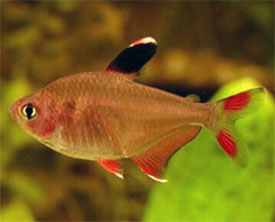
 Magyarul / Hungarian
Magyarul / Hungarian


- Scientific name: Chitala ornata
- Synonyms: Notopterus chitala, Notopterus ocellifer
- Common name: Clown Knifefish
- Group: Other fishes
- Habitat: Southeast Asia; Thailand, Burma
- Size: 100 cm
- Biotope: Inhabits in calm, overgrown backwaters of large rivers.
- Social behavior: Noctural fish. The animals are quarrelsome and waspish among themselves. With advancing age they become loners. The species practices brood care; patriarch family.
- Diet: Carnivorous; they eat live foods of all kinds (worms, insects and their larvae, fish). Chopped meat and crustacean meat is also accepted.
- Breeding: Has been successful bred in captivity.
- Tank: Minimum 500 litres
- Population: 1 fish for 800 litres
- Decoration: The periphery of the tank should be planted heavily, always keeping enough open space for swimming. Construct hideaways of stones and roots. Utilize floating plants to help dim the light. Keep in a species tank, or very aggressive individuals should be housed singly.
- Temperature: 24-28°C
- pH: 6-7
- Hardness: 1-10NK°
- Lifespan: 8-15 years
Description: Chitala ornata is the largest representative of the family. In exceptional cases, individuals can reach on meter in length. The animals are appreciated food fish in their native range. This elongated fish is high-backed with a long fin formed by the connection of the anal and caudal fins. The body color is silver-gray with four to ten distinct, black ocelli on the rear part of the body. Each ocelli is surrounded by a white area. Six or seven fin rays support the little flag-like Dorsal fin, which is usually located at the center of the body. The fish has no Ventral fins. The fins are darker gray.
The sexual differences are unknown. The Clown Knifefish spawn on a hard surface (stone, wood); the spawn is guarded and fanned by the male. In the wild, brood care is important for two reasons: 1. the eggs receive oxygen. 2. in the slowly flowing water, the eggs become covered with sediment. By fanning, the sediment is removed. The young hatch after barely on week and brood care by the male continues for a few more days.



































































